[All photographs copyright, Gary Nunn 2015] – On pelagic trips here in San Diego, California, any storm-petrels that we come across with an extensive white rump are investigated carefully. Particularly if they look small sized and shorter tailed. On 23 August 2015 we found this one just inside San Diego County waters along the east escarpment of the Thirty Mile Bank. The location was about 26 miles distant from the nearest landpoint at La Jolla. This bird fits well the known field marks of Townsend’s Storm-Petrel Oceanodroma (leucorhoa) socorroensis, currently recognized by the AOU as a form of Leach’s Storm-Petrel. This enigmatic small storm-petrel is only known to breed at islets surrounding Isla Guadalupe, which is about 200 miles southwest of San Diego, far off the coast of Baja, Mexico, and from where it ventures to Southern California waters.
In the photographs below the dark blackish coloration of this bird is quite evident and, in direct comparison with the browner colored Chapman’s Storm-Petrel O.(l). chapmani with which it simultaneously appeared, it looked almost snappily black and white. I think the more rounded shorter wings and the very shrunken look of the tail, compared to other forms of Leach’s Storm-Petrel, are also very noticeable. The bright white rump patch is sort of pointed in shape with perhaps a faint median dark mark when seen from behind. The white rump patch looks about equal length to the black tail. The white coloration of the rump patch does wrap a little way onto the undertail coverts which is characteristic of this form. The primaries and remiges do look quite worn away at the tips, but, even accounting for this wear, it presented a more bat like impression in flight than the other forms of Leach’s Storm-Petrel and looked more like a Least Storm-Petrel flying. I think the rear of the bird sort of hangs down a little bit in flight while the front is hunched up with the highest point at the shoulders leading to the squat neck and head. In several photographs this “rear down” flight profile is evident. You can also see in the photographs that the legs do not extend past the tail and look relatively short.

Townsend’s Storm-Petrel (left) and Chapman’s Storm-Petrel (right) – San Diego County waters, California 23 August 2015 (© Gary Nunn)


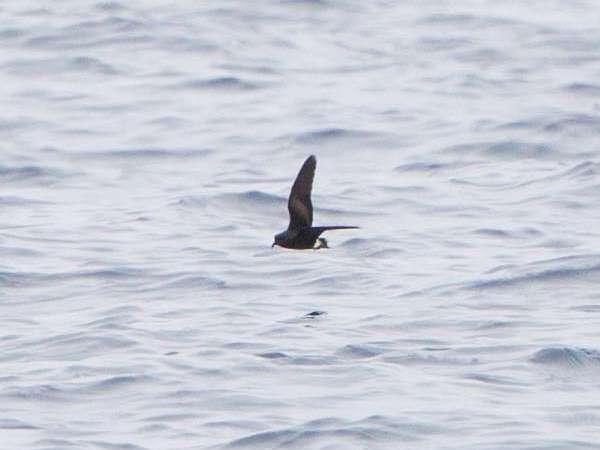
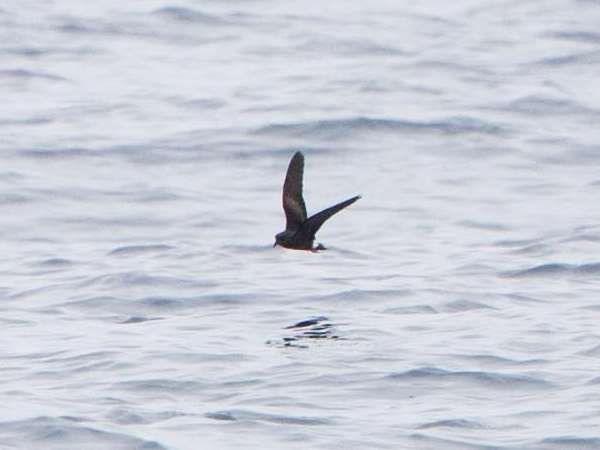
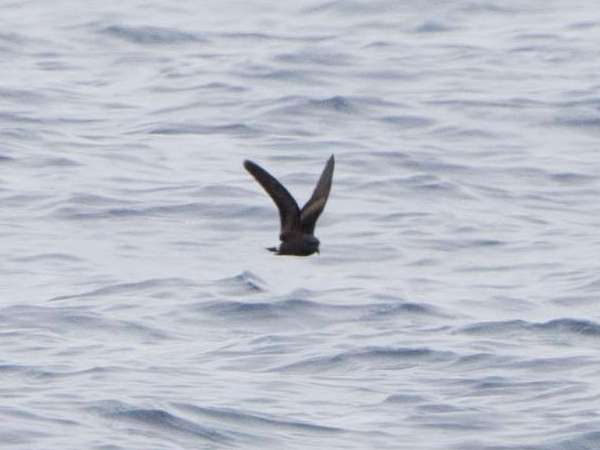
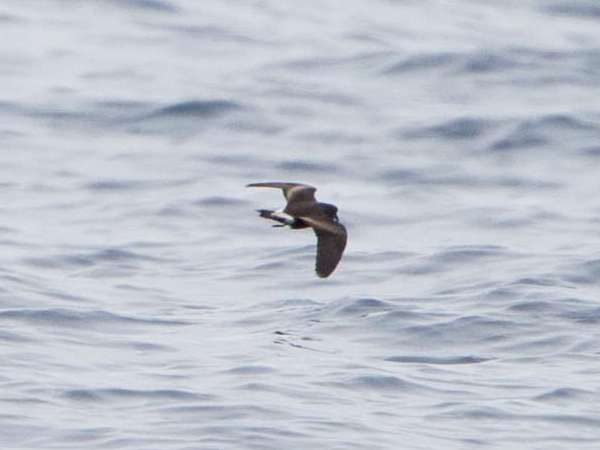


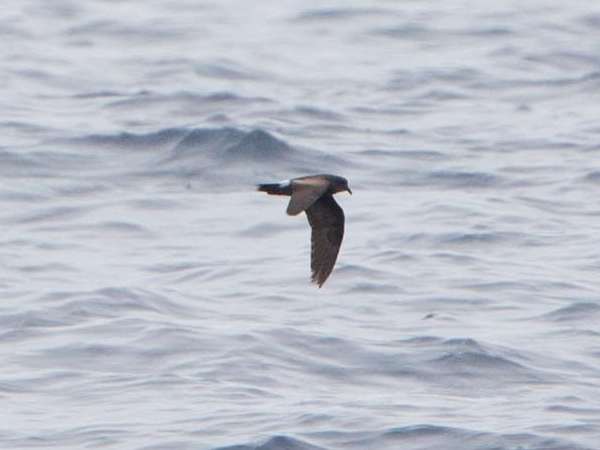
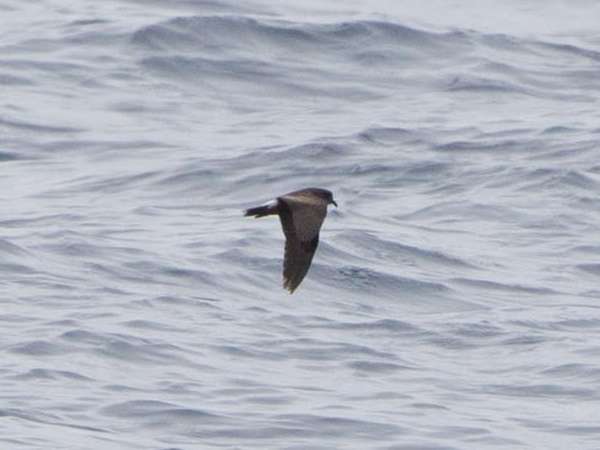
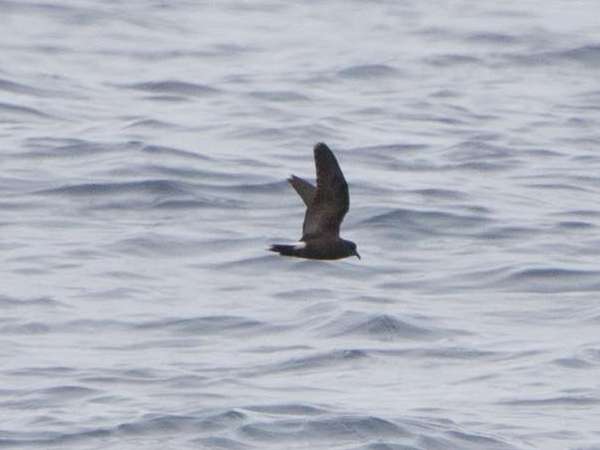

Hi Gary,
I just found your blog while trying to identify a little bird that’s come to my backyard patio. It looks like a female house finch, but with a smaller, needle-like beak and a round white spot under the chin. It’s about the same size as a house finch. Your blog is really great!
Thanks,
Connie
Do you have other dates that Townsend’s Storm-Petrel has been seen on pelagics out of San Diego county? WE saw one probably 10 years ago, but do not have the pelagic date. Thanks, Tim
Hi Tim, apologies for late response! Townsend’s Storm-Petrel is a late summer specialty here in San Diego. There are very few reports corroborated with photos, so we are still learning about calendar schedule of its occurrence. But late summer seems the only time it is being seen.
Best, Gary.